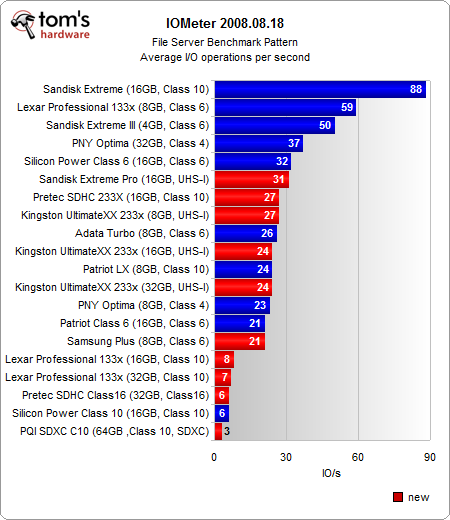10 SDXC/SDHC Memory Cards, Rounded Up And Benchmarked
The latest flash-based SD memory cards with UHS-I deliver up to 63 MB/s throughput. Users who want to exploit that performance need to pay attention to a few details, like making sure they upgrade to a USB 3.0 card reader. Which card is the fastest?
Benchmark Results: Access Time And I/O Performance
Access time and I/O performance are hardly relevant on portable memory products, such as these SD cards. Access time, particularly, is low on the list of must-consult metrics. However, I/O performance may be of interest for a small fraction of our readers, as it is indeed possible to run a full system installation on an SD or CompactFlash memory card. Industrial PC designs and systems based on the smallest form factors are possible use cases.
Read access time is equally quick on all of the SD cards in the test bed...
...while write access time differs significantly. The slowest product, PQI’s SDXC C10 card, actually requires 1.37 seconds, on average, to commence write operation. Keep in mind that this doesn’t really impact users working with digital cameras. But the benchmark triggers multiple random access operations, which the cards oftentimes fail to respond to in a quick fashion.
Since these cards were designed to read and write data sequentially, they are not very impressive when it comes to performing random read/write operations at varying block sizes. Most of the SD cards are comparable to hard drives from somewhere around 1995. Only SanDisk’s Extreme shows reasonable performance.
The Web server I/O test pattern does not involve write operation, which is why all cards deliver 3-4x performance of a conventional 2.5” hard drive.
Get Tom's Hardware's best news and in-depth reviews, straight to your inbox.
Current page: Benchmark Results: Access Time And I/O Performance
Prev Page Comparison Table And Test Setup Next Page Benchmark Results: Random Read/Write



